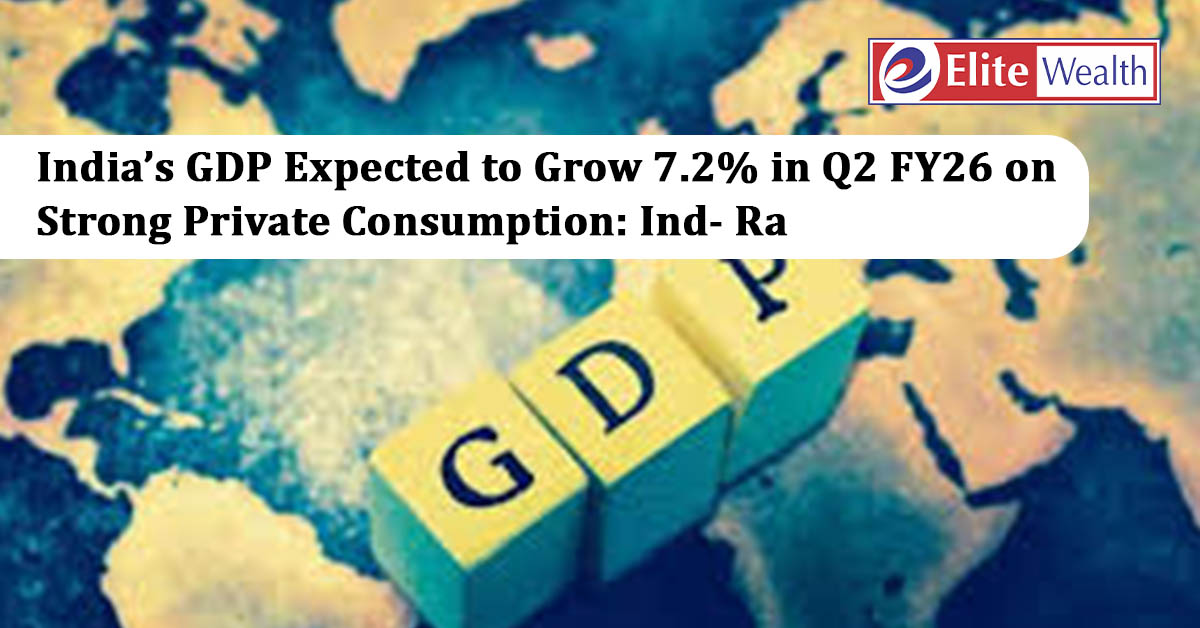
India’s GDP is expected to expand 7.2% year-on-year in Q2 FY26, driven primarily by a surge in private consumption and sustained domestic demand, according to the latest estimates by India Ratings & Research (Ind-Ra). The projected growth marks a strong rebound from 5.6% in Q2 FY25 and follows the 7.8% jump in Q1 FY26, the fastest pace recorded in the last five quarters.
Private Consumption Emerges as Main Growth Driver
Ind-Ra noted that private consumption—the largest component of GDP—has strengthened due to:
- Higher real incomes across income groups
- Low inflation supporting purchasing power
- Favourable base effects
- Improved rural wage trends
- Income tax reductions boosting disposable income
Private consumption is estimated to have grown 8% YoY in Q2 FY26, an acceleration from 7% in Q1.
Services Sector and Manufacturing Support Growth
On the supply side, the economy benefited from a robust services sector, which continues to anchor overall GDP performance. Manufacturing activity also gained momentum, aided by improving goods exports and resilient domestic demand.
Investment Activity Remains Steady
Ind-Ra projects investment demand to have risen 7.5% YoY, supported by the central government’s ongoing capital expenditure push. Public sector investment continues to be a key enabler of medium-term growth, even as private investment gradually improves.
Nominal GDP Growth May Moderate
Despite strong real growth, the agency warns that nominal GDP growth may have slipped below 8% in Q2 FY26 due to easing inflation. This could lead to slower tax revenue growth, posing potential fiscal management challenges in the months ahead.
Official Data on November 28
The National Statistics Office (NSO) will release the official GDP figures for Q2 FY26 on November 28, which will confirm whether India has sustained its strong growth momentum into the second quarter.
Summary
India Ratings & Research expects India’s GDP to grow 7.2% in Q2 FY26, driven by strong private consumption, rising incomes, low inflation, and resilient demand. The services sector and manufacturing exports also supported growth. Investment demand is estimated to have increased 7.5% due to continued government capex. However, nominal GDP growth may have fallen below 8%, raising fiscal concerns. The NSO will publish the official GDP data on November 28.
Disclaimer:
This article is intended solely for educational and informational purposes. The securities or companies mentioned are provided as examples and should not be considered as recommendations. Nothing contained herein constitutes personal financial advice or investment recommendations. Readers are advised to conduct their own research and consult a qualified financial advisor before making any investment decisions.
Investments in securities markets are subject to market risks. Please read all related documents carefully before investing.
